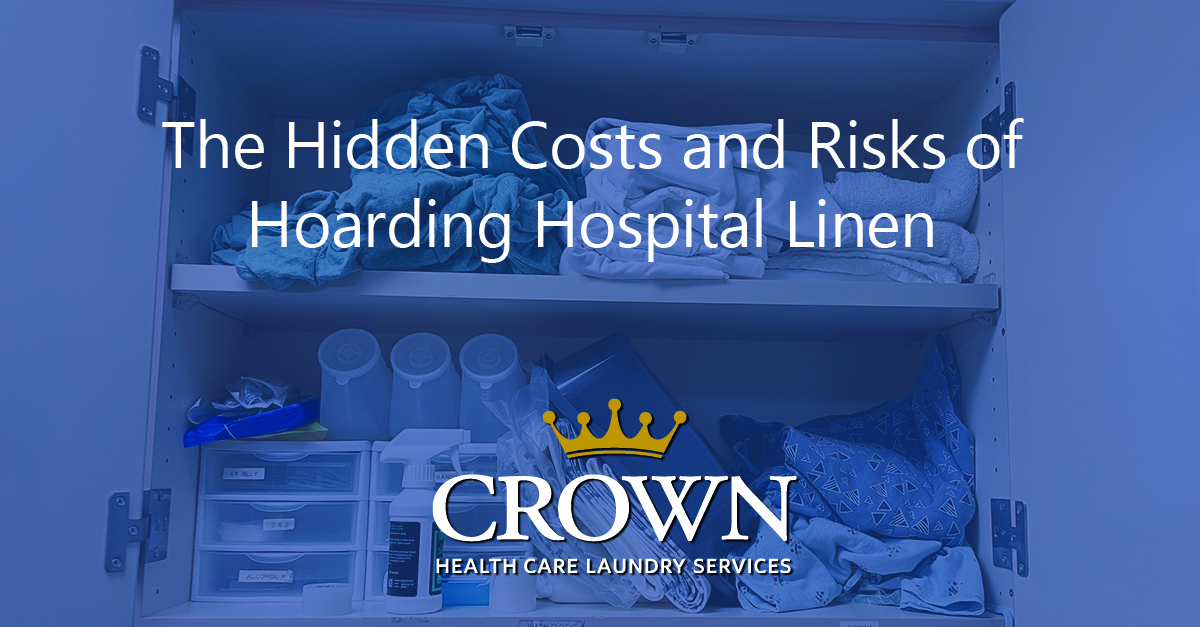
The Hidden Costs and Risks of Hoarding Hospital Linen
Effective resource management is crucial in healthcare, where maintaining a steady supply of essential items like hospital linen is vital for both patient care and operational efficiency. However, an often-overlooked practice—hoarding linen—can have significant negative impacts. While staff might believe they are safeguarding their ability to meet patient needs by stashing away extra linens, this behavior can create a cycle of shortages, inefficiencies, and increased costs that undermine the entire system.
The Disruption of Linen Circulation
Hoarding linen disrupts the intended circulation of textile products throughout a hospital. The inventory system is designed to distribute linen based on actual usage data, ensuring that the right amount is available where and when it's needed. When staff members hide linens in locations only they know about—whether in storage closets, roll-away carts, or patient rooms—these items are effectively removed from the system. This stoppage in circulation creates an artificial shortage, as the linens are not where they should be, leading to unexpected and unplanned demand.
The Fear-Driven Shortage Cycle
One of the paradoxes of linen hoarding is that the very fear of running out of supplies often guarantees a shortage. When front-line staff hoard linen out of concern that they won't have enough, it exacerbates the problem, as more and more of the inventory is hidden away rather than being used where it's needed. This fear-driven behavior creates a self-fulfilling prophecy: the more linen is hoarded, the more likely it is that other areas will experience shortages, leading to further hoarding.
The Financial Impact of Hoarding
The financial consequences of linen hoarding are substantial. When linens are hidden and not returned to the central laundry, they are often counted as lost. This can significantly inflate linen loss charges, as the inventory system registers these linens as missing, even though they are merely stashed away within the facility. As a result, the hospital may face increased linen loss fees, which are designed to recover costs for linens that are presumed to be permanently lost.
According to the Textile Rental Services Association, or TRSA, healthcare facilities can lose nearly 30% of their linen inventory to hoarding, misuse, theft, transfers, or incorrect disposal. This loss can cost U.S. hospitals approximately $840 million annually. In reality, much of what is considered lost might simply be hidden in various parts of the facility, causing unnecessary financial strain.
Additionally, as hoarding leads to artificial shortages, facilities are forced to purchase or rent more linen than necessary, further straining their budgets. This creates a cycle where costs continue to rise due to perceived shortages and inflated linen loss charges, all stemming from the same root cause: hoarding.
Compromising Infection Control
Linens play a vital role in infection control efforts within hospitals, making proper storage and management critical. To ensure hygiene and safety, all linens should be kept on covered carts or in central linen closets. Storing linens in patient rooms, at nursing stations, or in any area that is not a designated clean linen room or cart increases the risk of contamination. When linens are hoarded and stored improperly, it undermines the facility’s infection control protocols, potentially leading to the spread of infections or diseases. Effective linen management, including proper storage practices, is essential for maintaining the hygiene standards required to protect patient health.
Impact on Patient Care
Inefficient linen management due to hoarding directly affects the quality and consistency of patient care. Shortages caused by hoarding can delay necessary procedures or lead to patients receiving substandard linen, impacting their comfort and overall experience. Consistent, timely availability of clean, fresh linen is essential for providing the high level of care that patients expect and deserve.
Crown’s Approach to Mitigating Linen Hoarding
At Crown Health Care Laundry Services, we understand the challenges that healthcare facilities face in managing linen inventory effectively. While we cannot completely stop linen hoarding, we can play a crucial role in mitigating its impact through education and strategic support.
- Education and Onsite Support: Crown provides education to your staff about the financial and operational impacts of linen hoarding through our QuickCare Linen Lessons program. By helping staff understand the broader implications of hoarding, we aim to reduce the practice over time.
- Onsite Distribution Services: For facilities utilizing our onsite distribution services, Crown’s team can assist in managing linen more effectively by checking typical hiding places as part of their daily duties. This proactive approach helps ensure that linen is in circulation where it’s needed, reducing the likelihood of shortages and inflated loss charges.
- Advanced Linen Management Software: We offer linen management software for acute care locations that tracks linen usage across your facility. This system provides valuable insights into how much linen is being distributed, where it is being used, and whether there are any discrepancies. This data helps prevent shortages and maintain a consistent supply.
- Regular Audits and Inventory Management: Crown conducts regular audits to monitor linen usage and identify potential issues. Our inventory management practices are designed to optimize linen distribution, ensuring that your facility operates efficiently without the risk of linen shortages or inflated loss charges.
By partnering with Crown Health Care Laundry Services, your facility can mitigate the hidden costs and risks associated with linen hoarding. Our expertise in linen management helps reduce costs, ensures efficient use of resources, and supports the delivery of the highest standard of patient care.